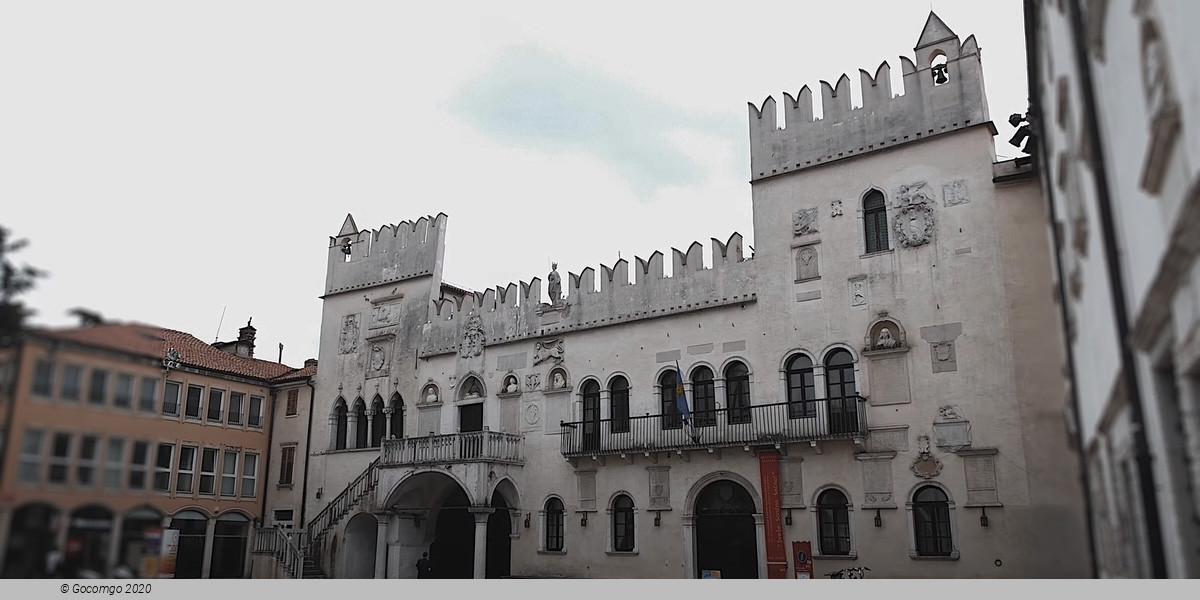Koper

Koper is the fifth largest city in Slovenia. Located in the Istrian region in the southwestern part of the country, approximately five kilometers (3.1 miles) south of the border with Italy and 20 kilometers (12 miles) from Trieste, Koper is the largest coastal city in the country. It is bordered by the satellite towns of Izola and Ankaran. With a unique ecology and biodiversity, it is considered an important natural resource. The city's Port of Koper is the major contributor to the economy of the Municipality of Koper.
History
Koper began as a settlement built on an island in the southeastern part of the Gulf of Koper in the northern Adriatic. Called Insula Caprea (Goat Island) or Capro by Roman settlers, it developed into the city of Aegida, which was mentioned by the Roman author Pliny the Elder in his Naturalis Historia (Natural History) (iii. 19. s. 23).
In 568, Roman citizens of nearby Tergeste (modern Trieste) fled to Aegida due to an invasion of the Lombards. In honor of the Byzantine Emperor Justinian II, the town was renamed Justinopolis. Later, Justinopolis was under both Lombard and Frankish rule and was briefly occupied by Avars in the 8th century.
Since at least the 8th century (and possibly as early as the 6th century) Koper was the seat of a diocese. One of Koper's bishops was the Lutheran reformer Pier Paolo Vergerio. In 1828, it was merged into the Diocese of Trieste.
Trade between Koper and Venice has been recorded since 932. In the war between Venice and the Holy Roman Empire, Koper was on the latter side, and as a result was awarded town rights, granted in 1035 by Emperor Conrad II. After 1232, Koper was under the Patriarch of Aquileia, and in 1278 it joined the Republic of Venice. It was at this time that the city walls and towers were partly demolished.
In 1420, the Patriarch of Aquileia ceded his remaining possessions in Istria to the Republic, consolidating Venetian power in Koper.
Koper grew to become the capital of Venetian Istria and was renamed Caput Histriae 'head of Istria' (from which stems its modern Italian name, Capodistria).
The 16th century saw the population of Koper fall drastically, from its high of between 10,000 and 12,000 inhabitants, due to repeated plague epidemics. When Trieste became a free port in 1719, Koper lost its monopoly on trade, and its importance diminished further.
According to the 1900 census, 7,205 Italian, 391 Slovenian, 167 Croatian, and 67 German inhabitants lived in Koper.
Assigned to Italy after World War I, at the end of World War II it was part of the Zone B of the Free Territory of Trieste, controlled by Yugoslavia. Most of the Italian inhabitants left the city by 1954 when the Free Territory of Trieste formally ceased to exist and Zone B became part of the Socialist Federal Republic of Yugoslavia. In 1977, the Roman Catholic Diocese of Koper was separated from the Diocese of Trieste.
With Slovenian independence in 1991, Koper became the only commercial port in Slovenia. The University of Primorska is based in the city.
Architecture
Koper's 15th-century Praetorian Palace is located on the city square. It was built from two older 13th-century houses that were connected by a loggia, rebuilt many times, and then finished as a Venetian Gothic palace. Today, it is home to the city of Koper's tourist office.
The city's Cathedral of the Assumption was built in the second half of the 12th century and has one of the oldest bells in Slovenia (from 1333), cast by Nicolò and Martino, the sons of Master Giacomo of Venice. The upper terrace is periodically open and offers a great view of the Bay of Trieste. In the middle of it hangs the Sacra Conversatione painting from 1516, one of the best Renaissance paintings in Slovenia, made by Vittore Carpaccio.

